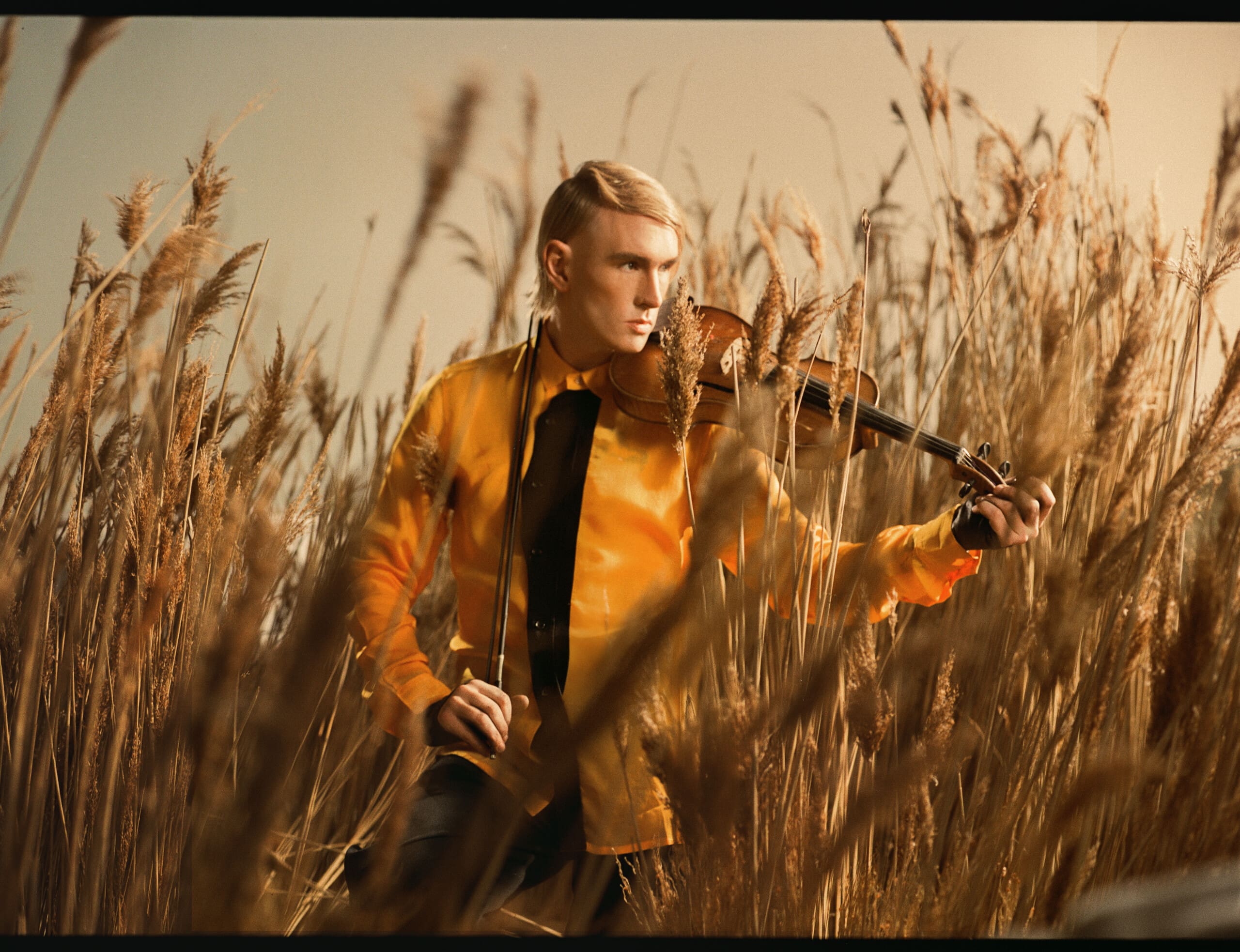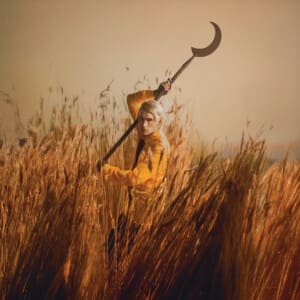
As you read this interview Patrick Wolf, the English singer and multi-instrumentalist, is likely driving himself across North America on a sojourn to bring the masses the music from his first album in 13 years, Crying the Neck.
In a way it makes sense that the artist, who’s only had his license for two years, is DIY-ing the tour to support this album. Crying the Neck is a record that is a deeply personal one. The album is a series of responses to loss, decay and death, himself, his country (and its history) and his late mother. His odyssey across North America also finds the artist performing not one, but different styles of show — curated specifically for the venues he’s playing in.
Recently, Patrick took time from his trek to answer some questions about his new album, its place in a series of four records, the method behind his music, and much more.
Crying the Neck is your first full-length album in 13 years. Can you talk about the emotions you felt when the album finally hit stores and streaming?
I was grateful for the day it was mastered and relieved the day it came out. It just meant I was able to close a 13 year writing cycle and move onto other work. Finally, there is a hope on release day that the work and message can be handed over in order to be of service to someone. I lower my expectations for most events when it comes to the music industry and releasing music. The way music is released on the internet in 2025 is a completely metaphysical and abstract concept. It gives little reward to the artist emotionally, so I can’t afford to be too invested in the outcome — until i’m touring and meeting people face to face in the audience and seeing how the work was actually received, human to human.
Can you explain what “crying the neck” means and why you chose this to be the name of the album?
“Crying the Neck” is an end of harvest ritual where the last man to cut the last of the crop in the fields yells out to the land and people around him to announce the end of the harvest. It’s a festival that falls both on my mothers birthday and her death day, the album is dedicated to her. Harvest and “The Scythe” are used as an overarching metaphor across the album for death, the album is a series of responses to loss, decay and death, of myself, my country and mother. The phrase “crying the neck” also reminds me of the primal cry that comes in grief, upon seeing a dead body or receiving news of someone’s passing.
In a press release it said this was the first of a four album series. Can you talk about the throughlines of this series, and why you decided to make a series of albums?
I can only say that Crying the Neck is the first in a series that works its way around the Celtic Wheel of the Year, a year of the ancient stations or seasons of the year round. Crying The Neck is set in July, August and September, so the two segments of the wheel it represents are “Mabon” and “Lammass”.
You released an EP, Better or Worse, not long after Crying the Neck dropped this summer. Is this part of the series, or was this an entity unto itself? If it’s own thing, can you explain why the releases were so close together?
It was based around the song “better or worse” from the the album, just a single with b-sides, not an album, hardly an e.p. My e.p’s are fully crafted dream sequences, not collections of songs, but sadly apple music and Spotify have rules enforced that anything over two songs of b-sides you have to call an “e.p”. It features my first French language song and first Spanish language song.
On this album you’re extremely open about addiction, rehab, and the loss of your mom. Was it difficult to be this vulnerable and open for the world to discover? Or was this a necessary catharsis?
I don’t feel like I’ve exposed anything particularly brazenly or candidly in the way suggested by your question. I actually don’t feel the album goes anywhere near the gory details of my disease or years in recovery. I wasn’t ready to begin to sharing this yet, its just in interviews, not my lyrics. This has been the great theme journalists have been questioning me on, as is the tabloid thirst for for scandal and suffering these days. As a writer I work closely with metaphor and folkloric symbolism to communicate. I think this ultimately creates a mirror for the listener to look into and find their reflection in, that means abstracting reality and translating into a language that is more resonant with the heart.
You’re currently on your first tour in the U.S. in 13 years. On that tour you rode in the trunk of your manager’s vehicle, now you’re driving a car full of instruments. Can you talk about the fears and excitement you have returning to the US after all these years with this new music? Also, driving yourself around — that’s got to feel fairly empowering, and more comfortable than being in a trunk.
Yes, I am driving myself from Seattle to D.C down the West Coast, across the desert to the midwest and up to Toronto and down the east coast. I’m currently at 5400 miles, no crew or bandmates or passengers or tour manager. I only learned to drive two years ago, so I carry a sense of pride in my autonomy and a thrill in deciding my own adventure, some of my tours have been carrying a crew and band of up to twelve people where everything is mapped and planned out to the hour of your life. I am free, my only obligation are the people who turn up to my shows and how to get to them and do my best show. I dont write a setlist and just choose the first song as I get ready after soundcheck and channel the spirit of the audience for two hours. There is little to fear but myself.
You’re doing two types of performances on this tour. Can you explain these two different shows, and how you decide which show you chose per night.
I had to rehearse two directions of music as the tour has been booked with seated theatre venues and standing rock ‘n’ roll or dance club venues. So I rehearsed a pool of around 60 songs from my catalogue, sometimes two versions of the same song, one with my electronics and beats and one completely acoustic. Some of the shows have become hybrids of the standing show and the seated show, I’ve got around seven instruments onstage to take the audience in any direction I feel like or the energy of the room is telling me to go.
What are five things you’re excited about for the rest of 2025, and heading into 2026?
For the rest of this tour, I am excited about visiting Edith Wharton’s house in Lenox Massachusetts “The Mount,” The Edgar Allen Poe’s house in Baltimore, I look forward to each of the shows, the concert in New York at the Adler Hall I know will be in two parts with an interval, so the most extensive showpiece of shows on this tour, reuniting with my two cats Percy and Ronny when I get home to my little house by the north sea at the end of November and most importantly, standing at the foot of the white cliffs of Dover near my house on a winters morning with a furious wind and freezing sea spray on my face, knowing my traveling and work is done for the year
When can we expect the next installment of this series of albums from you?
I have scheduled nothing for January until March so I can begin recording my eighth album in my garden studio.


